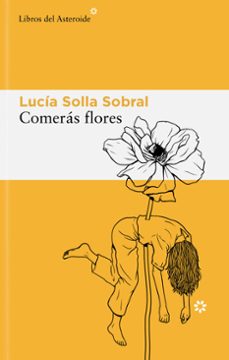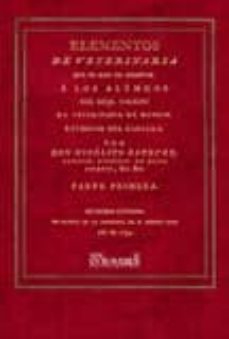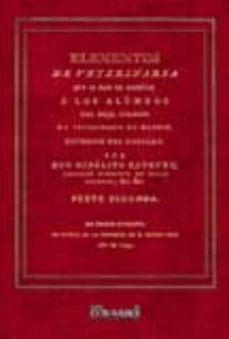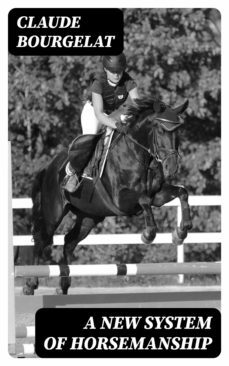Imprescindibles
Más vendidos Libros más leídos eBooks más leídos Todos los libros Todos los libros Autores destacados Series y sagas
Recomendados Libros recomendados Autores destacados Libros que inspiran Vidas con historia LGTBIQ+ English books
Ficción
Literatura Contemporánea Estudios literarios Clásicos Cuentos Poesía Teatro Libros de bolsillo Sagas literarias
Géneros literarios Novela romántica y erótica Novela negra Novela histórica Narrativa fantástica Novela de ciencia ficción Novela de terror Narrativa de humor Narrativa de viajes
No Ficción
Ciencias y tecnología Biología Ciencias Ciencias naturales Divulgación científica Informática Ingeniería Matemáticas Medicina Salud y dietas Formación Idiomas Estilo de vida Libros de Cocina Guías de viaje Narrativa de viajes Deportes Libros de Juegos Manualidades
Humanidades Autoayuda y espiritualidad Ciencias humanas Derecho Economía y Empresa Psicología y Pedagogía Filosofía Sociología Filología Biblioteconomía Estudios filológicos Estudios lingüísticos Estudios literarios Historia y crítica de la Literatura
Infantil
Juvenil
#Jóvenes lectores Narrativa juvenil Clásicos adaptados Libros Wattpad Libros Booktok Libros de influencers Libros de Youtubers Libros Spicy Juveniles Libros LGTBIQ+ Temas sociales Libros ciencia ficción Libros de acción y aventura Cómic y Manga Juvenil Cómic Juvenil Manga Shonen Manga Shojo Autores destacados Jennifer L. Armentrout Eloy Moreno Nerea Llanes Hannah Nicole Maehrer
Libros de fantasía Cozy Fantasy Dark academia Hadas y Fae Romantasy Royal Fantasy Urban Fantasy Vampiros y hombres lobo Otros Misterio y terror Cozy mistery Policiaca Spooky Terror Thriller y suspense Otros
Libros románticos y de amor Dark Romance Clean Romance Cowboy Romance Mafia y amor Romance dramatico Romance dramatico Romcom Sport Romance Otros Clichés Enemies to Lovers Friends to Lovers Hermanastros Slow Burn Fake Dating Triángulo amoroso
Cómic y Manga
Novela gráfica Novela gráfica americana Novela gráfica europea Novela gráfica de otros países Personajes, series y sagas Series y sagas Star Wars Superhéroes Cómics DC Cómics Marvel Cómics otros superhéroes Cómics Valiant
eBooks
Literatura Contemporánea Narrativa fantástica Novela de ciencia ficción Novela de terror Novela histórica Novela negra Novela romántica y erótica Juvenil Más de 13 años Más de 15 años Infantil eBooks infantiles
Humanidades Autoayuda y espiritualidad Ciencias humanas Economía y Empresa Psicología y Pedagogía Filosofía Historia Historia de España Historia Universal Arte Cine Música Historia del arte
Ciencia y tecnología Ciencias naturales Divulgación científica Medicina Salud y dietas Filología Estudios lingüísticos Estudios literarios Historia y crítica de la Literatura Estilo de vida Cocina Guías de viaje Ocio y deportes
Claude Bourgelat
Recibe novedades de CLAUDE BOURGELAT directamente en tu email
Filtros
Del 1 al 5 de 5
EXTRAMUROS EDICION, S.L. 9788496909939
A finales del siglo XVIII el entonces subdirector del Real Colegio de Veterinaria de Madrid, Hipólito Estévez, publica en dos tomos la obra Elementos de veterinaria. Exterior del caballo, que firma como suya. Sin embargo, el texto no es de creacion propia, sino una traduccion casi literal de los escritos de Claude Bourgelat, fundador en 1762 de la primera escuela veterinaria oficial del mundo y sin duda uno de los escritores que mayor repercusion han tenido en la historia de esta ciencia. Presentamos ahora este controvertido tratado, en edicion facsimil, por ser, pese al plagio de Estevez, una obra de inmensa trascendencia en la historia de la veterinaria y la hipica. Este primer volumen estudia las distintas partes exteriores de los caballos, el uso que se les puede dar a estos animales y como elegir uno adecuado y conservarlo sano. Incluye, ademas, una lamina desplegable y un breve diccionario con las palabras clave del tomo.
Ver más
Tapa blanda
EXTRAMUROS EDICION, S.L. 9788496909946
A finales del siglo XVIII el entonces subdirector del Real Colegio de Veterinaria de Madrid, Hipólito Estévez, publica en dos tomos la obra Elementos de veterinaria. Exterior del caballo, que firma como suya. Sin embargo, el texto no es de creacion propia, sino una traduccion casi literal de los escritos de Claude Bourgelat, fundador en 1762 de la primera escuela veterinaria oficial del mundo y sin duda uno de los escritores que mayor repercusion han tenido en la historia de esta ciencia. Presentamos ahora este controvertido tratado, en edicion facsimil, por ser, pese al plagio de Estevez, una obra de inmensa trascendencia en la historia de la veterinaria y la hipica. Este volumen, el segundo y ultimo, estudia las correctas proporciones del caballo, el gobierno y la alimentacion de este y un metodo para saber distinguir que caballo es mejor a la hora de seleccionar uno entre varios. Incluye, ademas, dos laminas desplegables y un breve diccionario con las palabras clave del tomo.
Ver más
Tapa blanda
DigiCat 8596547335610
In "A New System of Horsemanship," Claude Bourgelat explores the complex relationship between rider and horse, delving into techniques that blend practical training with ethical considerations. Written in the 18th century, the book reflects the Enlightenments emphasis on reason and observation, characterized by Bourgelats meticulous descriptions of equine anatomy and behavior. His approach combines elements of classical horsemanship with innovative training methods, making a significant contribution to the evolving discourse on equine management and ethics during a time when the treatment of animals was coming under increased scrutiny. Claude Bourgelat, a prominent veterinary surgeon and a pioneering figure in animal science, founded the first veterinary school in Lyon, France. His background in veterinary medicine and deep understanding of animal physiology informed his horsemanship practices, allowing him to champion a system that prioritized the welfare of the horse. Bourgelats dual commitment to animal care and effective training illustrates a groundbreaking shift in the perception of horses within society, reflecting broader cultural changes of his era. This book is a must-read for equestrians, animal lovers, and scholars alike, as it not only provides practical insights into horsemanship but also serves as a historical document that highlights the development of humane training practices. Bourgelats work resonates with contemporary values of ethical treatment and understanding of animals, making it a timeless resource for anyone interested in the art and science of horsemanship.
Ver más
eBook
Good Press 4064066138677
In "A New System of Horsemanship," Claude Bourgelat presents a revolutionary approach to equestrian education that blends practical knowledge with a deep psychological understanding of horse behavior. Written in the 18th century, a time when traditional horsemanship often relied on brute force and instinct, Bourgelat champions a systematic and humane method that emphasizes communication, empathy, and the physical training of both horse and rider. Through meticulous observation and innovative techniques, he lays the groundwork for modern equestrian practices, offering a comprehensive guide that remains influential in the field of horsemanship today. Claude Bourgelat, a prominent veterinarian and equestrian of his time, was driven by his passion for both animals and scientific inquiry. His background in veterinary medicine likely informed his emphasis on the well-being of horses, merging agricultural practices with humane training approaches. His experiences in the burgeoning age of enlightenment, characterized by a quest for knowledge and reform, positioned him uniquely to challenge prevailing methods and advocate for a more compassionate treatment of horses. For readers passionate about equestrianism, animal welfare, or the history of veterinary practices, Bourgelats "A New System of Horsemanship" is an essential addition to their libraries. This seminal work not only provides practical guidance but also invites reflection on the ethical dimensions of training, making it a thought-provoking read for both seasoned riders and newcomers alike.In this enriched edition, we have carefully created added value for your reading experience:- A succinct Introduction situates the works timeless appeal and themes.- The Synopsis outlines the central plot, highlighting key developments without spoiling critical twists.- A detailed Historical Context immerses you in the eras events and influences that shaped the writing.- A thorough Analysis dissects symbols, motifs, and character arcs to unearth underlying meanings.- Reflection questions prompt you to engage personally with the works messages, connecting them to modern life.- Handpicked Memorable Quotes shine a spotlight on moments of literary brilliance.- Interactive footnotes clarify unusual references, historical allusions, and archaic phrases for an effortless, more informed read.
Ver más
eBook
DigiCat 8596547413592
In "A New System of Horsemanship," Claude Bourgelat presents a groundbreaking approach to equestrian training that blends empirical observation with philosophical inquiry. This seminal work articulates techniques rooted in a profound understanding of horse behavior, emphasizing harmonious communication between horse and rider. Bourgelats literary style is both didactic and elegant, drawing on a rich historical context of horsemanship that stretches back to ancient classical teachings while introducing innovative concepts that challenge traditional practices of his time. Claude Bourgelat, an eminent veterinarian and founder of the first veterinary school in Lyon, France, wrote this book rooted in his extensive knowledge of animal physiology and behavior. His professional background fueled his desire to promote a more compassionate and effective means of training horses, reflecting Enlightenment ideals of understanding and mastering nature through science rather than brute force. This intersection of veterinary science and equestrian art marks a pivotal moment in the evolution of horsemanship literature. This essential text is a must-read for equestrians, trainers, and anyone passionate about the ethical treatment of animals. Bourgelats insights will resonate with modern readers, offering timeless techniques and principles that elevate the practice of horsemanship while fostering a deeper connection with these magnificent animals.
Ver más
eBook
Del 1 al 5 de 5































